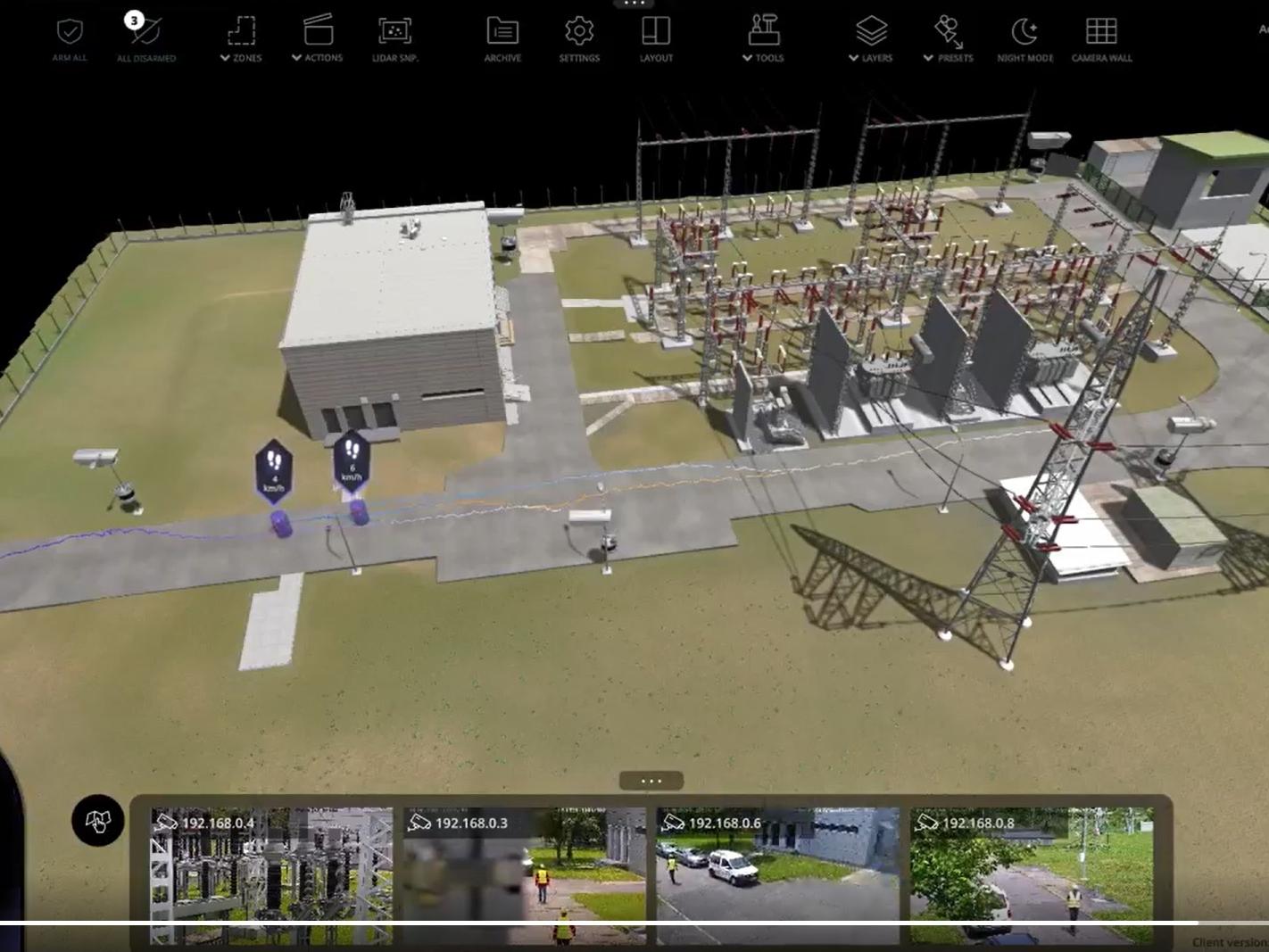
Brian Sims
Editor

Brian Sims
Editor
EG.D (PART of the E.ON Group and the supplier of electricity to 2.7 million people in the southern regions of the Czech Republic on the borders of Austria and Germany) has chosen Hexagon’s HxGN dC3 LidarVision solution for the purposes of substation security.

According to the International Energy Agency, in 2024, global electricity consumption increased by nearly two times the annual average of the past decade. At the same time, new regulations such as the Critical Entities Resilience Directive, which will come into force across all European Union Member States in July 2026, and Germany’s KRITIS Umbrella law are being introduced to guide organisations responsible for critical infrastructure in ensuring resilience in the face of existing and emerging threats.
Resilience of critical infrastructure
For energy providers, transformer substations are an integral component of the energy grid, securely and reliably transmitting electricity to homes, businesses, schools and hospitals, etc at the correct voltage.
Major incidents involving substations are rare due to the rigorous monitoring, maintenance, safety and security measures in place. However, when a situation arises, it can cause significant problems, as was highlighted in early 2025 when a fire at a site in the UK interrupted power to 5,000 homes and affected a large international airport.
Until recently, Best Practice for safeguarding unmanned substations focused on traditional forms of perimeter protection using fencing (typically steel and passive infrared sensors), alarms, remote monitoring via CCTV cameras and an access control system (often operated via a card or biometrics to manage authorised entrance). However, EG.D decided to embark on a pioneering pilot project that would test the capabilities of the very latest in LiDAR-based 3D surveillance technology.
Improved safety and security
Tomáš Sofka, security technologies specialist at EG.D, explained: “We’ve partnered with Hexagon for many years in the field of GIS and have been particularly impressed by the company’s innovative solutions in volumetric detection and LiDAR technology. We wanted to assess how the latter could be used to provide stronger security to keep unauthorised individuals out of substations, locate intruders and improve safeguards for maintenance personnel while they are working on-site near high-voltage equipment.”
HxGN dC3 LidarVision was the solution chosen for the project. This advanced 3D surveillance software system is based on volumetric detection technology and designed to secure entire sites, unlike traditional perimeter protection systems, which tend to concentrate only on the fence line.
The project uses five strategically placed LiDAR sensors that enable the virtual creation of secure, safe and sterile zones (including the perimeter fence). Crucially, these zones can be switched on and off or changed at the click of a button or the drag of the mouse.
For example, when maintenance is being carried out, the zone in which the work is taking place can be deactivated. Meanwhile, other areas remain live in order to prevent workers from straying into an unauthorised or potentially hazardous area.
Automatic monitoring
Authorised personnel and trespassers can also be automatically monitored and tracked via a live, real-time feed into EG.D’s Security Control Room.
Further, the system recognises the number of people and their precise positions, along with their speeds and directions of movement (if walking or running) and even their projected trajectories. This can be augmented further with PTZ cameras, alarms and speaker systems to communicate with the person(s) in question.
Another significant advantage of this type of system is the ability to create a digital twin for every substation. In doing so, scenarios can be played out virtually to test the resistance and resilience of safety and security measures. Essentially, this creates a 3D representation/map of the entire facility for interaction. It enables the positioning of LiDAR sensors and cameras to be optimised to mitigate potential blind spots or poor viewing angles before anyone steps on-site.
The system can be enhanced further using thermal sensors and cameras that monitor the temperature of designated areas and raise an alert if it deviates from the norm. This is valuable for intrusion detection (whether instigated by humans or animals) and the early detection of fire before it begins to smoke or ignite.
Setting a new standard
“Our experience of working with Hexagon has been exceptional,” concluded Tomáš Sofka. “The collaboration was exemplary and professional throughout all phases of the project. The response of the management team to the pilot operation has been overwhelmingly positive. We would highly recommend Hexagon to other organisations.”
As a result of the pilot project’s success, EG.D and Hexagon are working together on a plan to roll-out HxGN dC3 LidarVision at other energy facilities across the grid. The company is also actively sharing its knowledge with other national energy companies, including those in the US and the Asia-Pacific region, which are considering this new approach as the possible ‘gold standard’ for substation resilience, safety and security.
*Further information is available online at www.hexagon.com
Dorset House
64 High Street
East Grinstead
RH19 3DE
UNITED KINGDOM
01342 31 4300